Setting up a captivating aquarium is an art that aquarists passionately pursue. Among the most exquisite and cherished species, the angelfish stands out with its graceful appearance and charming demeanor.
But keeping angelfish alone isn’t always ideal, they thrive better with suitable tank mates. In this article, we’ll explore the world of angelfish tank mates and discover the best companions to create a harmonious underwater community.
Table of Contents
Creating a Peaceful Underwater Community
Adding compatible tank mates to your angelfish aquarium can offer several benefits, including reduced stress for the angelfish, enhanced visual appeal and the establishment of a balanced ecosystem.
Read Also: How to Add New Fish to Tank (in A RIGHT WAY)
However, it’s crucial to choose companions carefully to prevent aggression and ensure the well-being of all inhabitants. Let’s dive into the various angelfish tank mate options.
Critical Considerations for Tank Mates
Before introducing new tank mates to your angelfish, there are essential factors to consider to ensure compatibility and harmony within the aquarium community.
Size and Temperament
When selecting tank mates for your angelfish, choosing fish of a similar size is vital to avoid accidental predation. Larger fish might see smaller species as potential prey, leading to unfortunate outcomes.
Additionally, considering the temperament of potential tank mates is crucial. Angelfish, despite their beauty, can sometimes display territorial behavior.
To maintain a peaceful underwater community, opt for peaceful and docile species more likely to coexist harmoniously with the angelfish.
Water Parameters
Maintaining consistent water parameters is fundamental to the well-being of all aquarium inhabitants, including angelfish and their tank mates.
Before introducing new companions, ensure that the water’s temperature, pH, and hardness levels suit the chosen specie. Different fish have specific environmental requirements, and maintaining a stable and suitable habitat is essential for their health and longevity.
Read Also: How Fast Do Angelfish Grow? Week-by-Week Analysis
Angelfish Tank Mates
Peaceful community fish are excellent angelfish tank mates, promoting a serene environment and fostering camaraderie among inhabitants.
We can divide them into 2 categories: Bottom-Dwellers and Mid-level Swimmers
Bottom-Dwellers
Adding bottom-dwelling fish is an excellent way to utilize all aquarium levels and create a balanced ecosystem. Three of the most suitable Bottom-Dwellers are mentioned here.
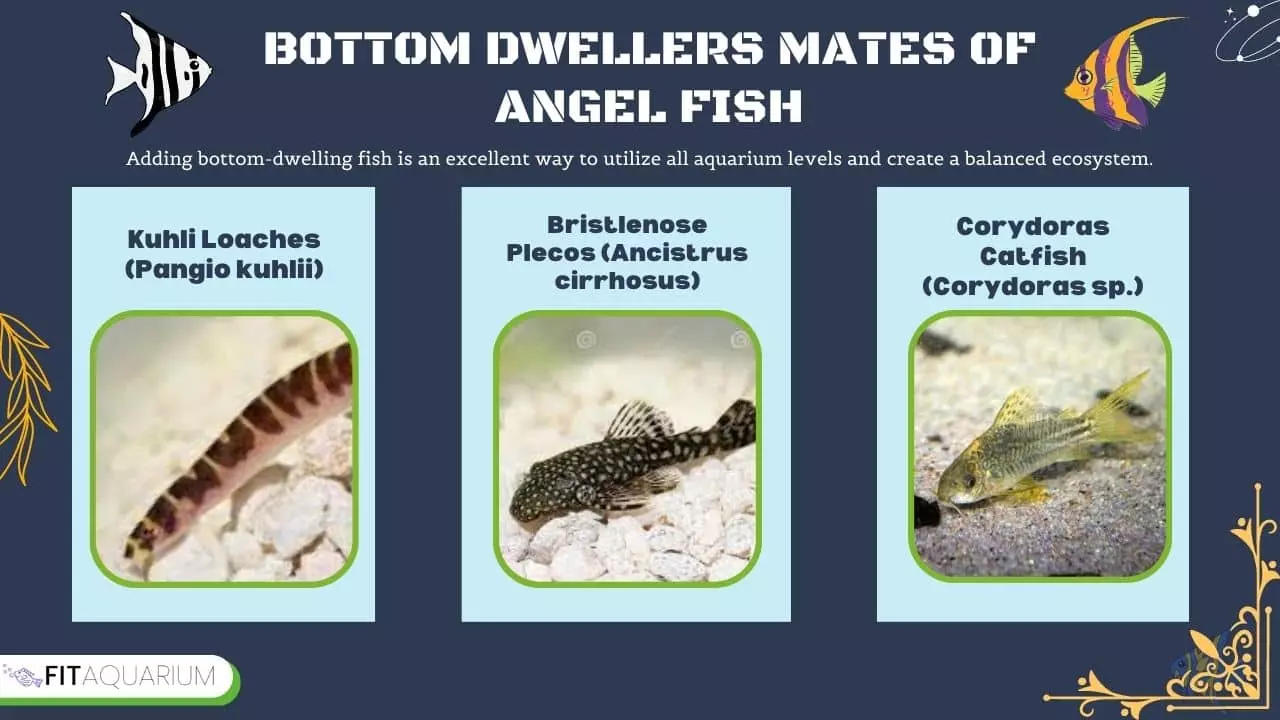
Kuhli Loaches (Pangio kuhlii)
Kuhli loaches are slender, nocturnal fish known for their eel-like appearance and intriguing behavior. They are highly compatible with angelfish due to their peaceful nature.
Kuhli loaches prefer to spend their days hiding among decorations or plants, and they become more active during the evening hours. Their secretive nature adds an element of intrigue to the aquarium, making them fascinating companions for angelfish enthusiasts.
Bristlenose Plecos (Ancistrus cirrhosus)
Bristlenose plecos are not only efficient algae eaters, but they are also peaceful tank mates for angelfish. These unique catfish species have distinctive “bristles” on their snouts, adding character to their appearance.
Bristlenose plecos are well-known for their algae-eating prowess, helping to keep the tank clean and free of excess algae growth.
They are generally non-aggressive and prefer to focus on their scavenging duties rather than bothering other fish, making them excellent companions for angelfish in community setups.
Corydoras Catfish (Corydoras sp.)
Corydoras catfish, also known as “cories” or “cory cats,” are charming bottom-dwelling fish that coexist harmoniously with angelfish.
These small, armored catfish species are social and non-aggressive, making them perfect companions for the peaceful angelfish. Cories have a delightful habit of scavenging for food debris, helping to keep the tank clean and maintaining a healthier environment for all its inhabitants.
Mid-Level Swimmers
Mid-level swimmers add vitality and movement to the middle portion of the tank, contributing to a visually appealing underwater landscape.
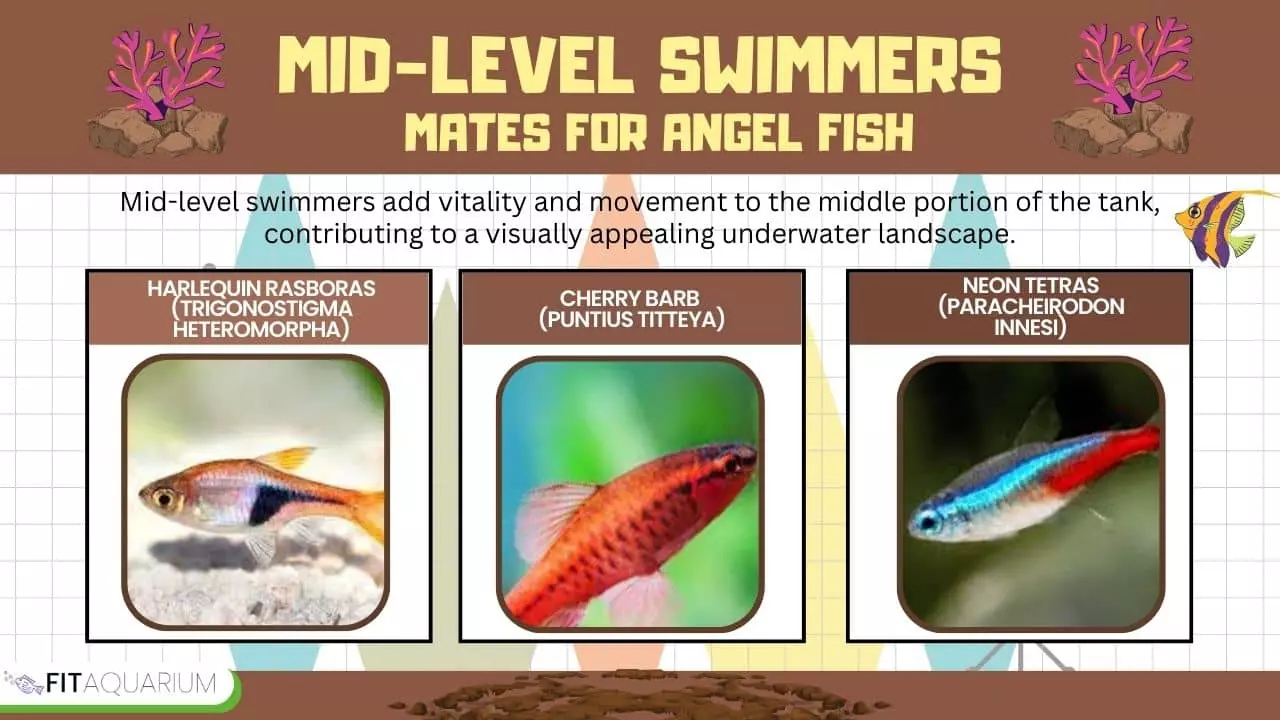
Harlequin Rasboras (Trigonostigma heteromorpha)
Harlequin rasboras are peaceful and social fish that often swim together in schools. Their striking coloration of orange-red bodies with bold black triangles creates a beautiful contrast in the aquarium.
Harlequin rasboras are highly compatible with angelfish and share a peaceful temperament, making them ideal companions. Their active swimming behavior and schooling dynamics add vibrancy and liveliness to the tank, creating an engaging and visually appealing underwater display.
Cherry Barb (Puntius titteya)
Cherry barbs are another colorful and lively fish that get along well with angelfish. Their vibrant red bodies and golden flanks add color to any community aquarium.
Cherry barbs are peaceful and active, creating a lively atmosphere in the mid-level of the tank. Their energetic behavior and compatibility with angelfish make them an excellent choice for those seeking an animated and vibrant aquarium environment.
Neon Tetras (Paracheirodon innesi)
Neon tetras are a classic and popular choice for community aquariums. With their vibrant neon-blue stripe that contrasts beautifully against a silver body, they add a touch of elegance to any tank.
These small, peaceful schooling fish are known for their calm demeanor and get along exceptionally well with angelfish. Neon tetras’ active and schooling behavior adds dynamic energy to the tank, creating a mesmerizing display of movement and color.
Unique Companions
These unique species make excellent additions for those seeking a diverse and captivating aquarium.

Bolivian Ram (Mikrogeophagus altispinosus)
The Bolivian ram is a beautiful and peaceful cichlid species that can coexist harmoniously with angelfish. With their stunning electric blue or violet hues, Bolivian rams add a touch of elegance and charm to any aquarium.
These intelligent and social cichlids exhibit interesting behaviors and are relatively easy to care for.
When provided with suitable hiding spots and territories, Bolivian rams thrive alongside angelfish, creating a captivating dynamic in the tank.
German Blue Ram (Mikrogeophagus ramirezi)
German blue rams are another stunning cichlid species known for their vibrant colors and calm disposition. Their electric blue bodies and striking black and red markings create a mesmerizing display.
German blue rams are peaceful and social, making them compatible tank mates for angelfish when provided with ample hiding spots and territories.
Their exquisite appearance and interesting behaviors add a touch of elegance and sophistication to the aquarium.
Pearl Gourami (Trichogaster leeri)
Pearl Gouramis are a fascinating addition to any angelfish community tank. These graceful labyrinth fish have a pearly iridescence on their scales, giving them a captivating appearance.
Their peaceful temperament makes them compatible with angelfish and other peaceful community fish. Pearl Gouramis also can breathe atmospheric air, allowing them to survive in low-oxygen conditions.
Providing ample vegetation and floating plants in the tank will encourage their natural behavior and make them feel more at home.
Invertebrates as Tank Mates
Invertebrates can also play a crucial role in maintaining a balanced aquarium ecosystem and adding diversity to the underwater community.
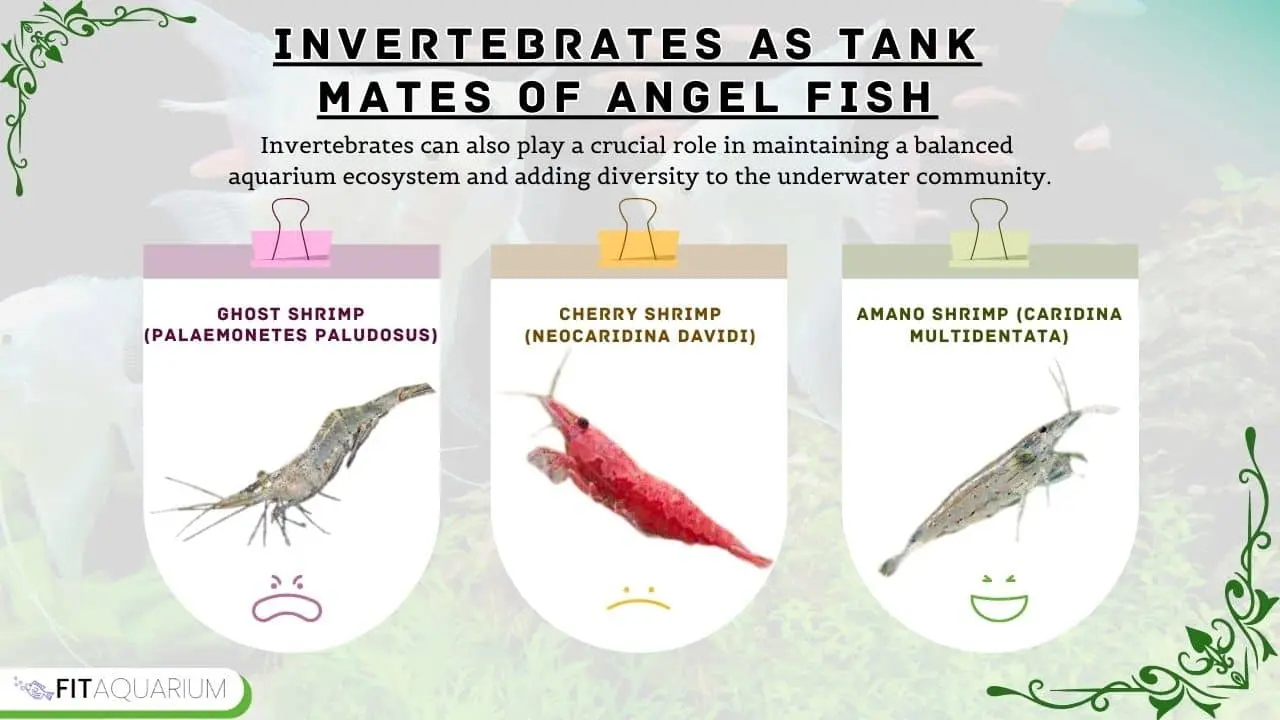
Ghost Shrimp (Palaemonetes paludosus)
Ghost shrimp are excellent scavengers and contribute to the tank’s cleanliness by feeding on leftover food and residue. Their transparent appearance makes them visually captivating as they blend into their surroundings.
Ghost shrimp are peaceful and non-aggressive, making them suitable tank mates for angelfish. These tiny crustaceans are fascinating to observe and add an exciting dynamic to the aquarium.
Cherry Shrimp (Neocaridina davidi)
Cherry shrimp are small, brightly colored crustaceans that provide a striking contrast to the angelfish. Their bright red coloration stands out beautifully against the backdrop of green plants and aquarium decor.
Cherry shrimp are peaceful and easy to care for, making them popular in community aquariums. As they graze on algae and biofilm, they contribute to maintaining a healthier tank environment.
Amano Shrimp (Caridina multidentata)
Amano shrimp, algae-eating or Yamato shrimp, are highly valued for their voracious appetite for algae.
These small and peaceful invertebrates are excellent additions to an angelfish tank. They help keep the tank clean and algae-free, benefiting the angelfish and the overall tank ecosystem.
Amano shrimp are hardy and easy to care for, making them suitable for beginners and experienced aquarists. Their interesting behavior and diligent cleaning habits add a delightful touch to the aquarium.
Choosing Plants for a Community Tank
Incorporating live plants into the aquarium enhances its aesthetic appeal and provides fish hiding spots and grazing areas.

Java Moss (Taxiphyllum Barbieri)
Java moss (Taxiphyllum Barbieri) might be a good tank companion for Angelfish, because of its minimal maintenance and non-intrusive character. This thick and luxuriant aquatic plant provides great hiding places for fry and tiny fish, minimizing Angelfish aggressiveness.
Furthermore, by absorbing excess nutrients and adding a natural feel to the aquarium environment, Java moss helps to preserve water quality.
Anubias (Anubias spp.)
Anubias is a popular choice due to its low-maintenance nature and compatibility with angelfish. This genus of aquatic plants features broad, leathery leaves that offer excellent hiding places for fish, including angelfish.
Anubias can be attached to rocks or driftwood, adding a naturalistic environment to the tank. Their robust nature and slow growth rate make them an excellent addition to any community tank, providing both aesthetic appeal and functional benefits.
Java Fern (Microsorum pteropus)
Java fern is another hardy plant that can tolerate a wide range of water conditions, making it suitable for beginners and experienced aquarists. Its textured, dark green leaves provide ample hiding spots and grazing areas for angelfish and other tank inhabitants.
Java fern can be attached to rocks or driftwood, creating a lush and naturalistic aquatic landscape. As a slow-growing plant, it requires minimal maintenance, making it a favorite choice for many aquarium enthusiasts.
Conclusion
Creating a vibrant and harmonious community aquarium with angelfish tank mates requires thoughtful planning and consideration, and you can also find more tips from this fish aquarium guide. By choosing peaceful and compatible companions, maintaining suitable water parameters, and incorporating live plants, you can establish an aquatic paradise that captivates the eye and fosters a sense of serenity.
So, dive into the world of angelfish tank mates and build an underwater world that mesmerizes you and your aquatic companions.
Frequently Asked Questions
Here are some frequently asked questions about Angelfish Tank Mates.
-
What are Angelfish worst tank mates?
Knowing the poor tank mates for your aquatic buddy is also necessary for its healthy growth. In the case of Angelfish, Oscars, Arowanas, African Jewel Cichlids, Gouramis, Danios, and Tiger Barbs are the worst tank mates for Angelfish. Bettas are sometimes recommended as tank mates, but in my experience, they are not.


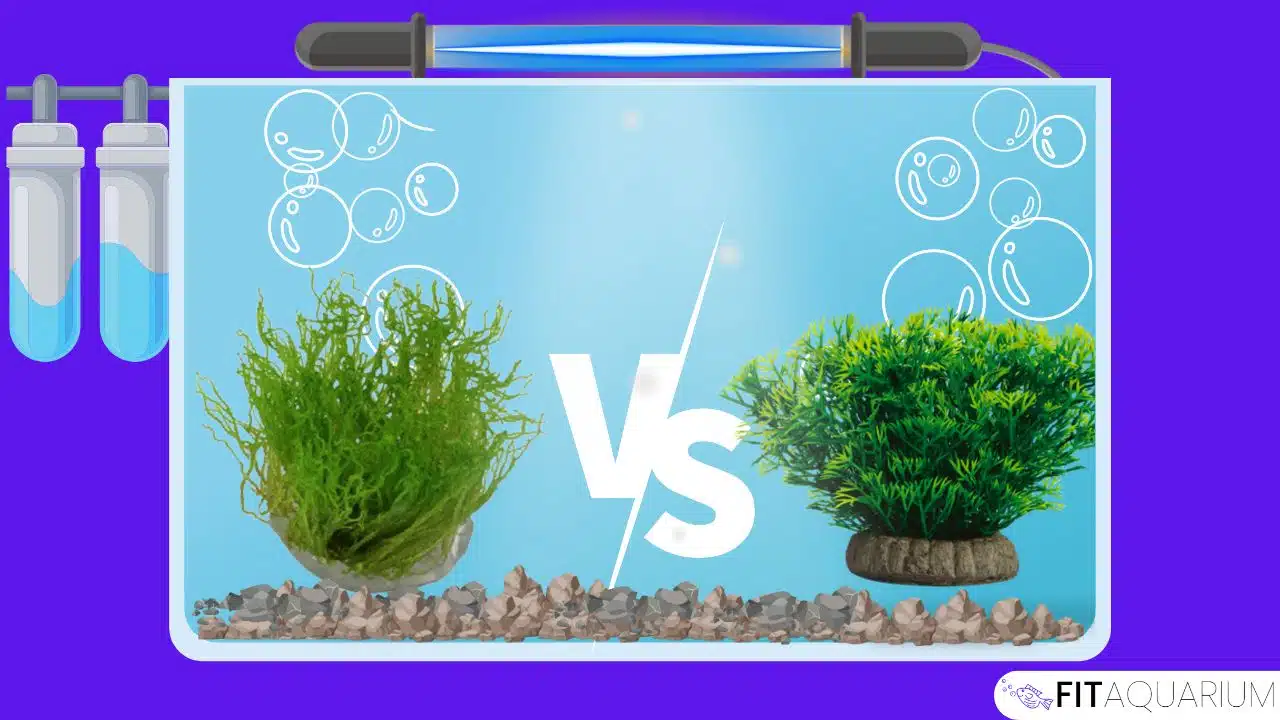
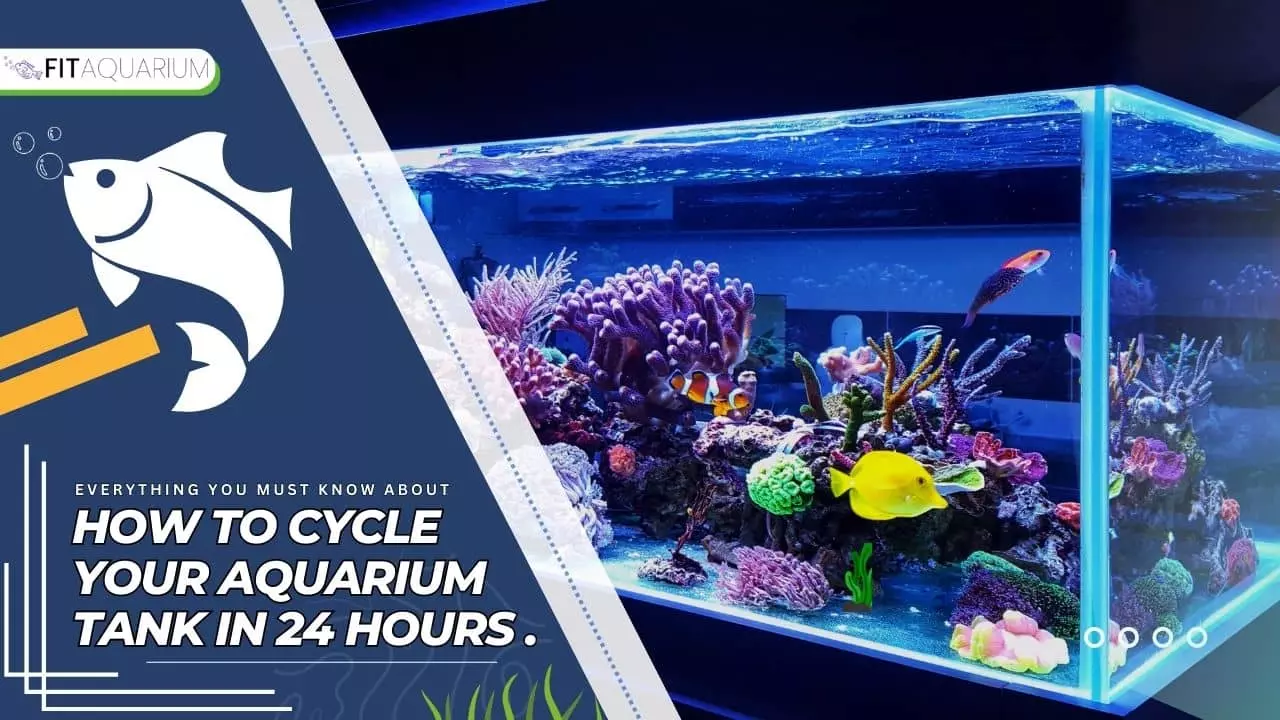

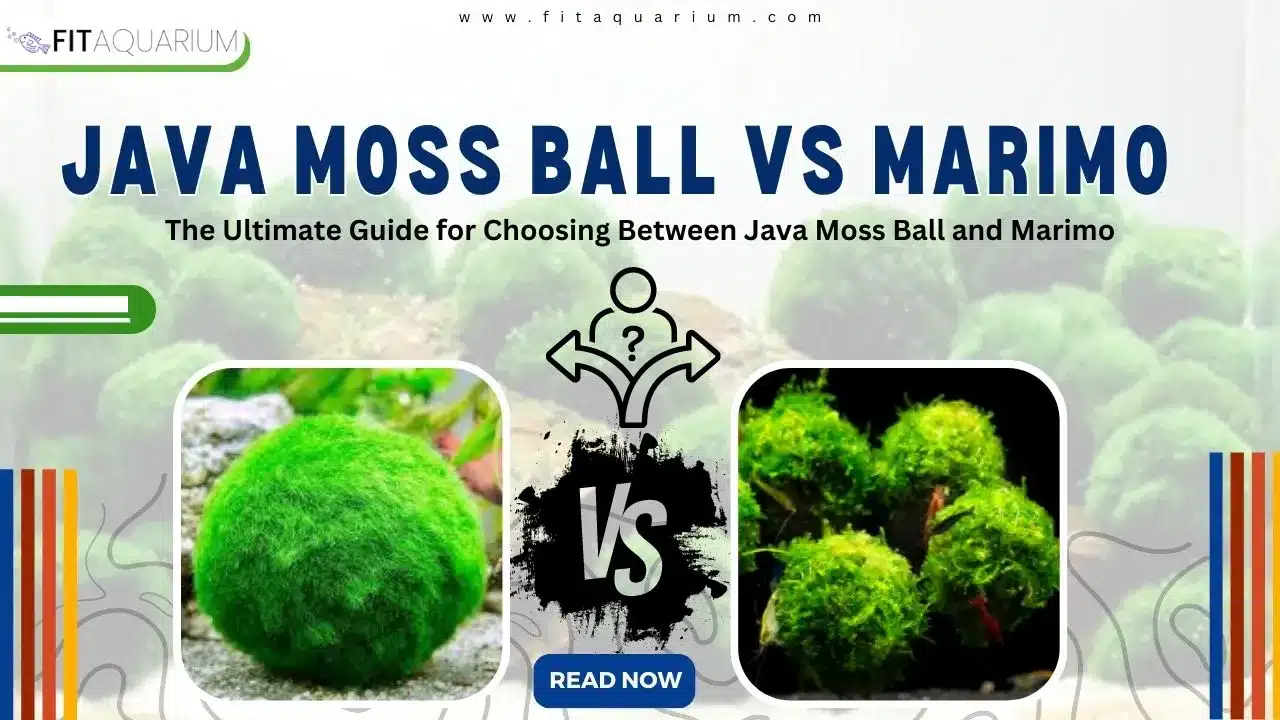
Thank you for sharing your thoughts. I really appreciate your efforts and I am waiting for your next write ups thanks once again.
No worries, man!
Appreciate your comment